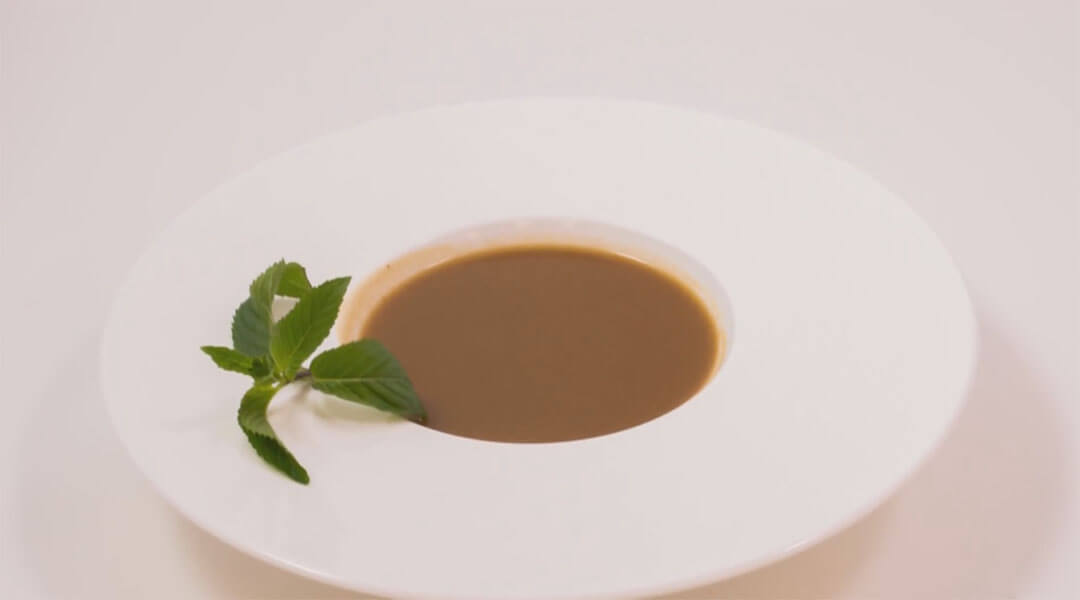A fresh new day calls for a fresh and flavorful sauce! Today, we have handpicked for you, one of the French classic sauces called Sauce Espagnole. Espagnole Sauce is a brown sauce and is the core behind many beloved derivative sauces we have today. This sauce is one of the “holy grail” mother sauces from Escoffier and has very little to do with its Spanish name.
Toggle for Table of Contents
Introduction and History

An interesting story behind the name of this sauce goes something like this – the Spanish cooks of King Louis XIII’s kitchen went a bit creative to please the new bride Anne. They decided to use fresh tomatoes and some tomato sauce recipes to oomph up the flavor of another classic French sauce Veloute.
The Spanish tomatoes and cooks were such big hits back, that the sauce they so prepared was named in honor of Spain. Espagnole is the French word for Spain, and that is how we got our modern classic mother sauce.
Since then, this tangy and appetizing accompaniment has become a very vital part of most groundbreaking cookbooks. It has turned out become a staple base and a classic precursor for other sauces and derivatives to be breathed to life. It is commonly known as the “Brown Sauce” and is prepared with brown stock, brown roux, tomatoes, and Mirepoix.
What Is Sauce Espagnole
Espagnole is a starting point for some very popular and rich flavorful sauces like the demi-glace. It is traditionally served as an accompaniment to red meats and steaks and tastes heavenly with vegetables and meats alike. Making Sauce Espagnole is a challenging task; it is the second most difficult sauce to make among the other French mother sauces.
All of these 5 classic sauces have one thing in common – they all are built upon a roux and increased in volume with the addition of a stock. Here’s something to help you understand these sauces better:
- Béchamel: Roux mixed with Dairy stock (traditionally milk or cream)
- Véloute: Roux mixed with White Stock (traditionally chicken, but also vegetable or fish)
- Espagnole: Roux mixed with Brown Stock (traditionally veal or beef)
- Tomato: Roux mixed with Tomatoes (also prepared by solely reducing juice of blanched/boiled tomatoes over medium to low heat until it turns thick)
- Hollandaise: Egg Yolks mixed with Clarified Melted Butter + Acid (add some lemon juice/ white wine)
Toggle for Related Popular Posts
How to Prepare It?

Our brown Espagnole sauce recipe proves that brown roux does know how to party with basic kitchen ingredients like celery and carrots and turn it into something delish! To make this complicated brown sauce, you need – onions, carrots, celery, butter, flour, brown/beef stock, tomato puree, bay leaf, peppercorns, thyme, parsley, and some bacon fat.
The first few terms you need to know about are:
- Sachet: herbs and spices dried and tied up in a cheesecloth
- Roux: thickening agent made out of butter and flour (1:1)
- Mirepoix: fancy French name for chopped celery, carrots and onions.
Once all your ingredients are ready, make a sachet out of the spices aforementioned and tie it to the handle or the edge of your cooking pot. In the pot, add butter and let it froth; add the mirepoix and sauté for a few minutes till it turns golden brown.
Pour in some flour while stirring and prepare your roux. Keep stirring and cooking on low to medium heat to form a brown colored paste. With the help of a wire whisk, put in the brown stock and tomato puree/tomato sauce while whisking; make sure no lumps get formed.
Once the mix comes to a boil, lower the heat and release the sachet into your pot and let the concoction simmer for almost an hour until the sauce enters the right consistency and decreases by more than half its volume.
Serve this hot, delectably rich Sauce Espagnole with a seasoning of freshly chopped tomatoes and thyme alongside your favorite meats!
Sharing is Caring

Like what you read so far? How about help us to spread this AWESOME post to your friend and family? Your shout-out will help to motivate us to create more great posts for you and everyone else. Thanks for your support!
Check out this post for 'Spice Up Your Steak with Sauce Espagnole.'
Demi-Glace from Espagnole and Other Derivates of Sauce Espagnole
Espagnole sauce dishes and recipes are frequently acquainted with in the culinary universe. Espagnole sauce is used for producing dozens of delectable gravies and derivative sauces. Though this brown sauce is a classic itself, it is believed by some to itself be a derivative of Escoffier Tomato Sauce.
Sauce Chasseur, Sauce Bigarade, Sauce Africaine, etc. are some of the most popular derivates of Espagnole. But, none is as powerful and flavor-packed as the Demi-glace.
The classical demi-glace is a secondary sauce which is prepared by combining veal stock and Espagnole in equal parts. The mixture is reduced to a ‘demi’ or half state by simmering over heat. Read the whole recipe of this beautiful sauce and learn what it can be best accompanied with here.
Demi-glace is also a brown sauce and it paves way for even more sumptuous renditions which are exceptionally savory and pleasantly aromatic.
Bonus Tip: Sauce Madeira

A wine enthusiast knows that Madeira is a traditional red wine which is known to lend deep, rich savory undertones to meaty sauces and gravies. You could turn your Sauce Espagnole into a Sauce Madeira with just a handful of ingredients and a couple of minutes.
Once you have your brown base sauce ready, follow the recipe above to turn it into a demi-glace. Add the Madeira wine into the glace and keep whisking to mix them together thoroughly. Bring this combination to a boil and let it simmer; add some chopped up sautéed mushrooms and fresh cream to it.
Once the Madeira-sauce mix starts thickening up, sprinkle salt and pepper according to your palate and serve it fresh with some beef tenderloin, grilled chicken, filet mignon, or just any poultry or meat.
Conclusion
We hope that this article was helpful in awakening the inspired home cook in you! Put on your aprons and whisk up some delicious Sauce Espagnole today! Stay tuned for many more tasty adventures.
The post Spice Up Your Steak with Sauce Espagnole appeared first on Gordan Ladd's Kitchen.
No comments:
Post a Comment